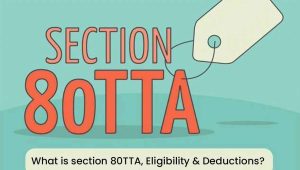Calculate Income Tax on Salary – As per the IT Act of 1961, any salaried person is required to pay a portion of their salary to the government as tax. This is referred to as the income tax. The legislation is made up of several revisions and modifications, with subsections outlining the specifics of tax payments, exemptions, and computations. There are several deductions applicable from subsections 80C to 80U. After deducting all applicable tax-saving incentives and allowances, the final sum is given to the government as income tax on wages.
Components used to calculate the income tax on Salary

The tax year
The prior fiscal year in which income tax is estimated is referred to as the tax year. The fiscal year begins on April 1 and ends on March 31 of the following year.
Assessment year
The word “Assessment year” is commonly used, but it perplexes the majority of people. The assessment year differs from the fiscal year. It’s completely new. In reality, an assessment year begins after the prior financial year has ended. The assessment year is a year in which the income tax for the preceding fiscal year is measured.
Salary breakup
The very first step in determining your income tax on salary is to obtain a salary breakdown. The salary breakdown can be found on the payslips or salary statement. If you don’t have them, go to HR and request them. You can appreciate the main components and general form of your pay by closely inspecting the slip or statement.
Taxable income
If you’ve determined your pay breakdown, you must compute your net wages. Taxable compensation is any income from which you must pay taxes, which covers any income other than your wages.
Deductions
Income tax is more than about you handing over money to the government. It is all about all of the money you will make due to income tax deductions. To arrive at the net revenue, these exemptions applicable under Section 80 of the Income Tax Act are deducted.
To calculate taxable revenue, you must have a thorough understanding of Section 80, the taxpayer’s best mate. This segment covers all forms of exemptions, such as mutual fund contributions, life insurance policies, pension interest, PPF, NSC, SIPs, mutual fund dividends, home loans, and so on. According to the current tax regime, you could subtract up to 2.5 lakhs every year.
TDS
TDS, or Tax Deducted at Source, denotes that the tax is deducted straight from your paycheck. Many companies use TDS to establish a hassle-free tax pattern. Don’t worry, you’ll get a refund on this because if further TDS is deducted, it will be returned to you. Employers are not the only ones to use TDS. Markets, too, are affected by the phenomena when paying interest. If there is indeed a difference in the count, you should show the correct investment paperwork and get a refund for the excess money deducted. You may also display the records ahead of time to prevent TDS.
The payable tax calculation
The final and final move is to compute the tax that must be paid. After deducting all available exemptions and TDS, the balance you are left with is the tax amount you would pay to the Indian government. If your gross income is much less than 2.5 lakhs, you are exempt from paying income tax. If you earn more than this amount, you would pay income tax based on your wage bracket.



